Marking the largely submerged rock formation known as Bush Island, Sunken Rock is a little workhorse of a lighthouse built in 1847, and still in service today. The tiny island is fully occupied by the lighthouse and a boathouse. It is situated in the St. Lawrence River half a mile north of the town of Alexandria Bay, NY, and within sight of the famous Boldt Castle.
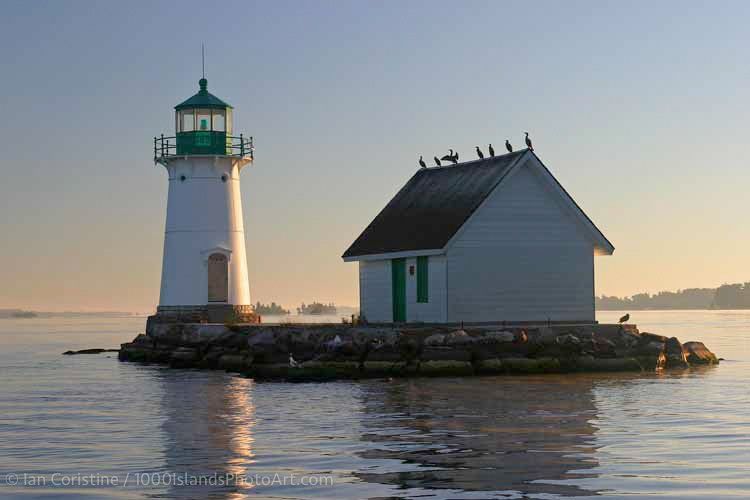
The first half century and more of lighthouse history in the United States was not an unmitigated success. In an extensive and detailed report to Congress in 1852, the first report of the newly created Light-house Board was over 850 pages in length. It was at this point that professionals took over management of lighthouses in the country.
The Board examined the conditions of the lighthouses across the country, made detailed comparisons with how matters were handled in other countries, and made numerous recommendations on how to improve the practice of lightkeeping in the United States. In their comparison, they found that the American lighthouses stacked up poorly in almost every aspect, from the quality of materials used to construct the light towers and associated buildings, the lanterns used in the lights, the fuels used to run the lights, the training and instruction of its keepers, etc. The extensive recommendations led to a vastly improved system, by which lighthouses were managed professionally, based on science and testing in all aspects of construction and maintenance.
Built during the great effort in the nineteenth century to light the way for navigation along the St. Lawrence River, the Sunken Rock light tower was originally a short, octagonal, brick structure. Following the creation of the Light-house Board, lighthouses were more rigorously examined, and improvements were implemented. An early improvement at Sunken Rock was the installation of a Fresnel lens (1855), a system used exclusively in France and across much of Europe, and strongly recommended by the Light-house Board.
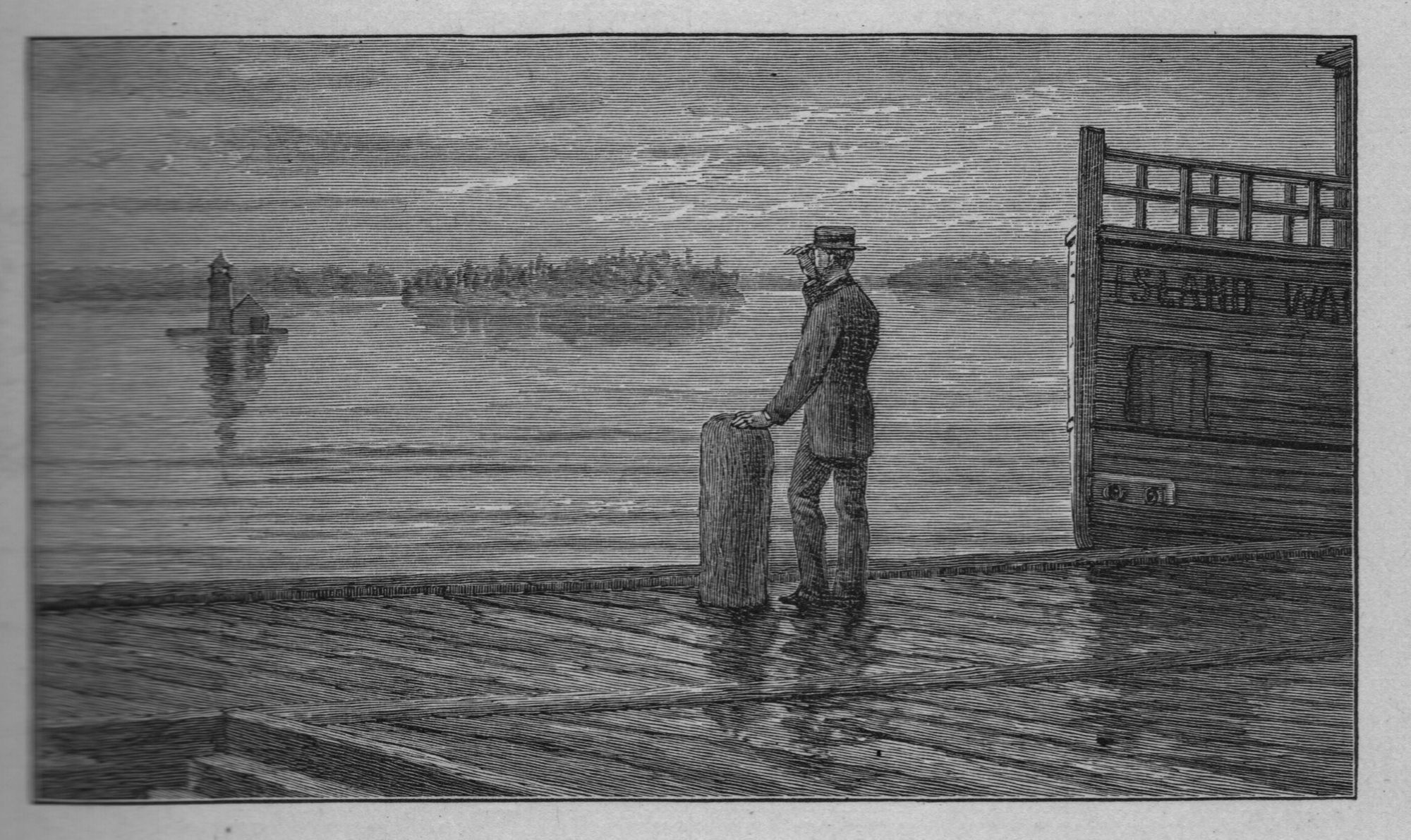
By the 1870s, the Light-house Board was making a regular assessment of all American lighthouses, identifying problems, and pushing for improvements. In 1873, repairs were promised at Sunken Rock for the following year; they didn’t happen. The Board petitioned Congress for funds each year, pointing out (1877) that “The ravages of time cannot be stayed, and it is poor economy to defer repairs which must eventually be made. In these expenditures retrenchment is not good policy.” By 1878, while the station was reported to be in fair order, the Board had a number of concerns. “The tower is of brick, sheathed outside with wood and shingled. It is old and a rough structure, in bad repair. The lantern is of an old pattern, with small panes.” The Light-house Board recommended that a new tower and lantern be established, and an appropriation of $5,000 was recommended. By 1880, the Board reported that “some slight repairs were made, but the tower is past economical repair and should be replaced by an iron one, which would cost, with some necessary repairs to the landing, $6,204.” Finally, in 1882:
“A new iron tower was erected in place of the old one. The new tower rests on a floor of concrete which was placed over the former foundation of the old tower. It was lined with brick to the first landing, and above that with wood. Lockers and a bunk were built, and the exterior of the tower was provided with a copper smoke-pipe. The superstructure of the ice -breaker and the landing should be renewed at an estimated cost of $600.”
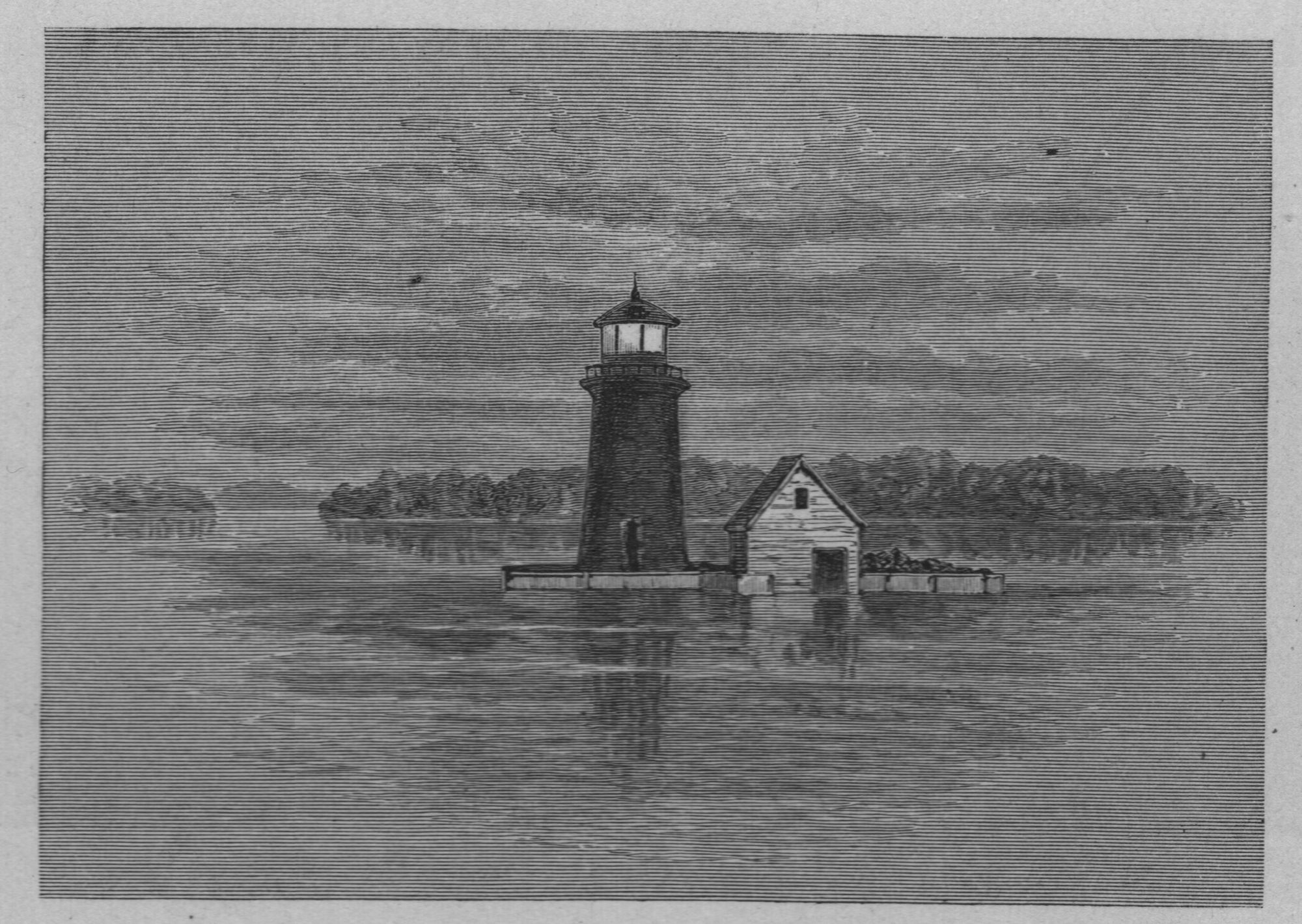
The earliest illustrations I have found date to 1886 (a sketch in Harper’s New Monthly magazine) and 1887, when an illustrated edition of the epic poem Geraldine, A Souvenir of the St. Lawrence was printed. The poem itself, first published in 1881, had many fans and many detractors (for its likeness to the phenomenal best-seller Lucile). A rather sour contemporary review of this 1887 edition says “We are at a loss to understand just why the anonymous poem of Geraldine, published some years ago, should be supposed to merit the honor now accorded it of an expensive reprint with illustrations,” but adds that the illustrations have been conscientiously made.
The grand illustrated edition was prepared nonetheless, and to this end “special artists . . . visited the scenes which the poem describes,” according to a Houghton, Mifflin pamphlet dated 1897. The 1887 illustrations were prepared too late to document the tower as it originally appeared, but they do give us an early picture of the new iron tower. The anonymous author of Geraldine was eventually revealed to be Alphonso A. Hopkins. Several artists contributed to the illustrated volume, and it may have been A.V. S. Anthony himself (under whose supervision the illustrations were drawn, engraved, and printed) who prepared the two unattributed illustrations of what is clearly Sunken Rock lighthouse.
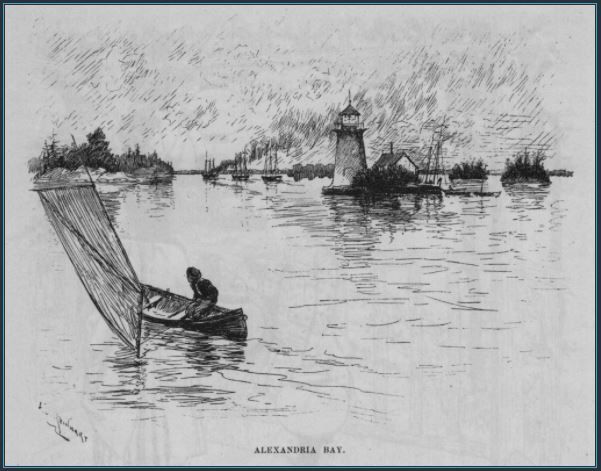
The lighthouse tower was originally painted brown, but in 1899, it was painted white and the lantern was changed from displaying a white light to a red one. From that day to this, Sunken Rock lighthouse has appeared essentially unchanged, subject only to maintenance, such as repainting and work on the supporting cribs, and further alterations to its light color. It was converted to electricity in 1934, and to solar in 1988. It remains an operational lighthouse, owned by the Saint Lawrence Seaway Corporation.
Lightkeepers
Sunken Rock was never a watched lighthouse in the traditional sense, since there was no accommodation available on the small shoal. In the 1878 report of the Light-house Board, it was noted that there was no dwelling for the lightkeeper, who occupied a house of his own in Alexandria (Bay), half a mile from the light. In 1883, a new boathouse was built, which included a partitioned watch-room with a bunk, but the 1908 annual report of the Light-house Board reported that “[t]his station is not provided with a dwelling. The keeper, whose salary is $580 per annum, with an allowance of 30 cents a day for rations, pays $96 per annum house rent.” There is no evidence to suggest that a keeper’s dwelling was ever built.
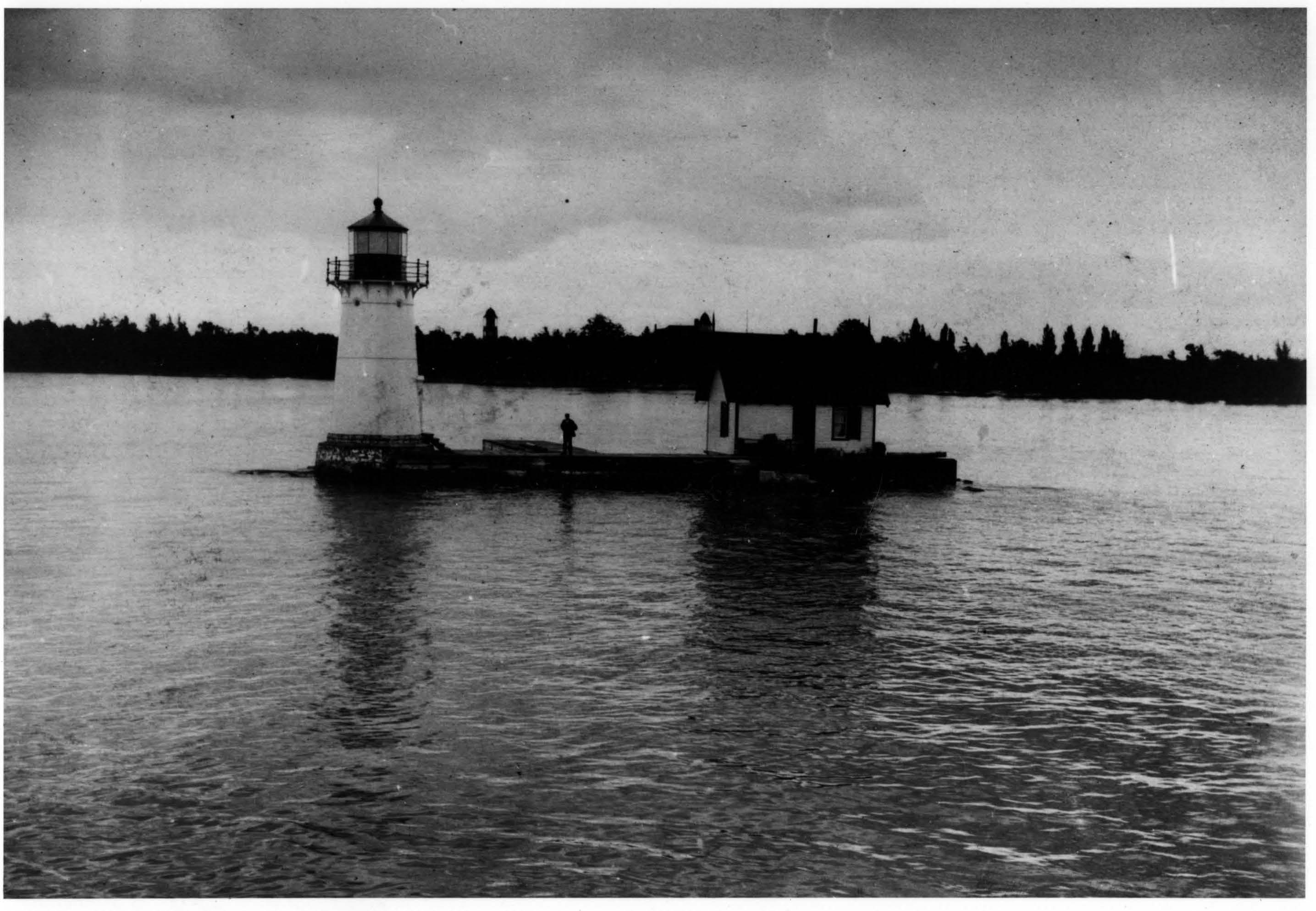
Sunken Rock saw several keepers come and go through its history as a watched lighthouse. In parallel with the relatively short tenure of the keepers over its first decades, the Light-house Board made annual recommendations for improved training of, provisions to, and remuneration for, lighthouse keepers. They bluntly stated (1870) that “the appropriations for the support of the light-house service have been considerably less than the detailed estimates submitted.” It would be a common refrain for years to come. Though training, management, and salaries all gradually improved, the lighthouse keepers were for many years among the most poorly paid government employees.1
|
Lightkeeper |
Year(s) |
Comments |
|
James Merritt |
1848 |
Resigned. |
|
Ralph Lasalk |
1848-1849 |
Resigned. |
|
Peter Dillenback |
1849-1853 |
Resigned. |
|
David Walton |
1853-1854 |
Resigned. |
|
Jacob P. Waggoner |
1854-1857 |
Removed. |
|
John Bolton |
1857-1861 |
Removed. |
|
Henry Campbell |
1861-1869 |
Resigned. |
|
Isaac Leonard |
1869-1871 |
Removed. |
|
E.H. Smith |
1871-1881 |
Resigned. |
|
Anson A. Leonard |
1881-1903 |
Resigned. Acting Keeper for
the first six months, before receiving his permanent appointment. |
|
Horace N. Curd |
1903-1908 |
Transferred. |
|
John C. Belden |
1908-1912 |
Transferred. |
|
Fredrick Lawson |
1912 |
Resigned. |
|
Horace E. Walts |
1912-1937 |
Efficiency star recipient.
Resigned due to poor health. Syracuse American, August 1, 1937. Walts was also keeper at Sister Island
Lighthouse. |
|
Edward J. Sweet |
1937-1958 |
United States Coast Guard (USCG).
Dates uncertain. Light
automated. |
The era of the watched lighthouse may have truly ended when Horace Walts retired. The lighthouse was converted to electricity in 1934. Then in 1939 the service was transferred to, and made a part of, the U.S. Coast Guard. After the retirement of Mr. Walts, the Coast Guard assigned Edward Sweet to take care of Sunken Rock and several other automated lighthouses in the area. Since Edward Sweet’s tenure, there has been no lightkeeper assigned to the lighthouse, and it is an unwatched light.
With the end of the watched lighthouse came the end of inspirational accounts of lightkeepers rowing out to help sailors off a stricken ship. Horace Walts, for example, was commended for the 1916 rescue of a man in a skiff who was nearly run down by a steamer.
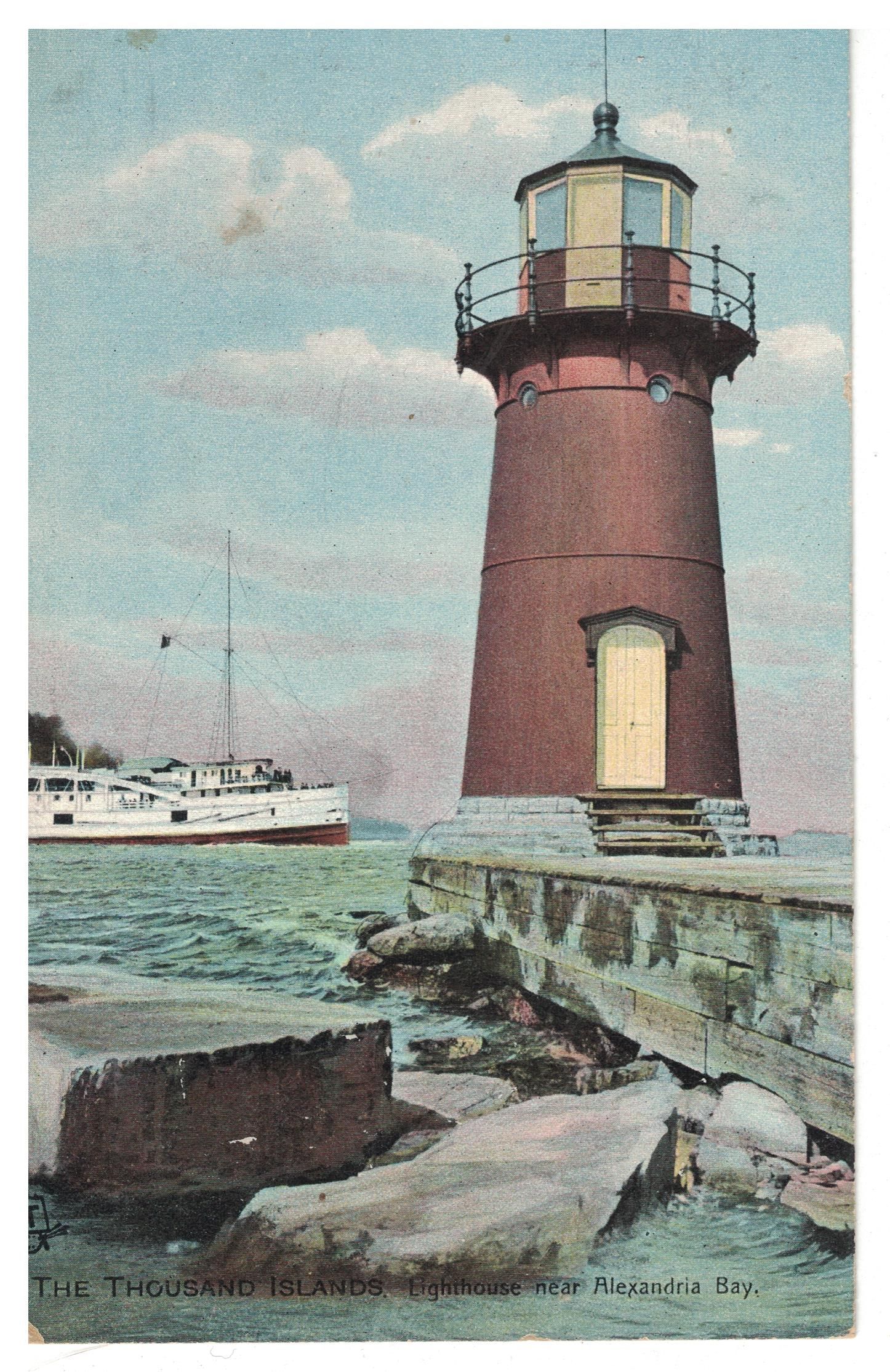
The wreck of the Roy A. Jodrey has been mentioned in a couple of Thousand Islands Life articles related to local diving sites. Though it has never been immortalized in song like the Edmund Fitzgerald, it, too, was carrying a load of iron ore in November. There was no lightkeeper to note when the Canadian ship passed by Sunken Rock Lighthouse that night in 1974, in what was reported to be limited visibility. A short while later the ship passed the Rock Island Lighthouse, and then struck a navigation buoy.
What had been a routine trip turned into something else. Despite efforts to patch the hull, Captain Hugh McDowell eventually ran the ship up onto the Pullman Shoal. The crew were all rescued, but efforts to save the ship were in vain, and four and a half hours after hitting the buoy, she sank. It took two days to find the ship because of the water depth in the area, searchers at the time expressing surprise that they could not find it in that small an area. As a result of the sinking, the Coast Guard charts for the area were found to be in error; what had been shown on the charts as 200 feet of water depth in the area was actually in excess of 250 feet. Considered to be a technical dive, the ship can be dangerous to visit. The first casualty was one of the official wreck investigators, and the most recent was a Canadian man from Kingston, who was later found to have died of a heart attack during his dive in 2011.
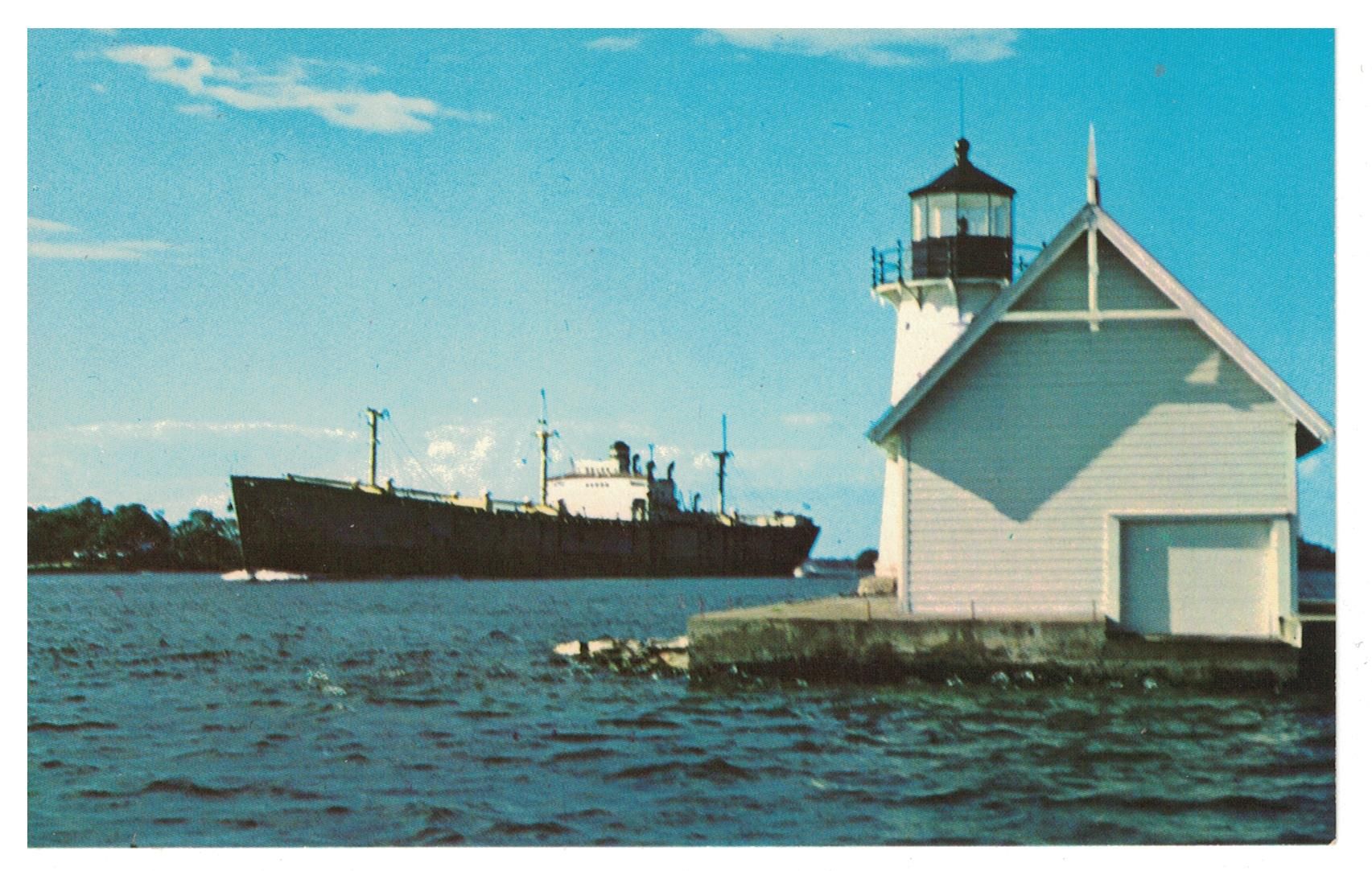
If you would like to see Sunken Rock lighthouse, it can be seen from both the water and the (American) shore in Alexandria Bay, and is likely to be seen on a boat tour to Boldt Castle.
1. I acknowledge and thank Thomas Tag for sharing his research on the lightkeepers of Sunken Rock.
By Mary Alice Snetsinger
More about Mary Alice Snetsinger, ecoserv@kos.net
Mary Alice Snetsinger grew up in the United States and Canada, and worked for four years at Thousand Islands National Park. She became interested in the 19th century lighthouses of the Thousand Islands in 1997 and has been researching them ever since. Mary Alice provided TI Life with articles about Wolfe Island’s Lighthouses, Fiddler's Elbow, Lindoe Island Light, the Ogdensburg Harbor Light and Cape Vincent Harbor Lighthouses; click here to these articles and here to see the latest two, Spectacle Shoal light and Sisters Islands Lighthouse.
Editor's Note: Our thanks to Mary Alice who never ceases to find interesting and unknown facts about these iconic lighthouses of the Thousand Islands!
Posted in: Volume 16, Issue 5, May 2021, History
Please click here if you are unable to post your comment.
